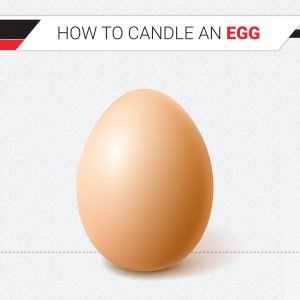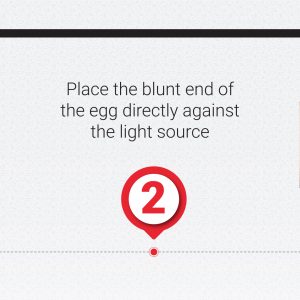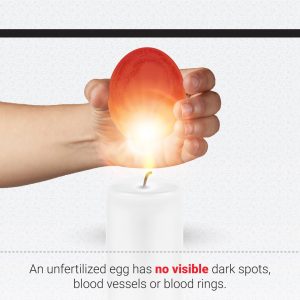What is egg candling?
The candling of eggs entails holding an egg up to a light source in order to inspect the contents. For the most part, candling takes place to detect whether eggs have been fertilised or not.
Poultry farmers are encouraged to candle their eggs regularly to pick up abnormalities. This means that the eggs are inspected for signs of blood rings and spots, meat spots, egg quality, as well as to ensure that the embryo is growing correctly.
How to candle your eggs:
Candling should preferably be conducted in a dark room so that the contents of the egg can be made visible in front of a light source. This light source can be a torch, candle, or any other sufficient light. It is important that the light source is placed at a convenient height, and that the light is not shining directly into the eyes of the person inspecting the eggs.
- The egg should be held between the thumb and forefinger.
- The blunt, larger side of the egg should be placed against the light source so that the contents of the egg is made visible.
- Eggs should be placed back into the incubator within 30 minutes of being removed.
- Eggs should be candled every few days to ensure that the embryo has healthy growth and development.
- Epol How to Candle an egg 1
- Epol How to Candle an egg 2
- Epol How to Candle an egg 3
- Epol How to Candle an egg 7
Good quality eggs
A good quality egg is that which has an embryo that is growing. This will start as a small reddish or dark spot with a network of blood vessels developing around it. It is important to keep candling the eggs as embryos that stop showing signs of development have most likely died and will soon start to decompose, and must be removed from the incubator.
Poor quality eggs
Poor quality eggs should not be considered for prolonged incubation, as the chances of a healthy chick developing and hatching are slim, and the eggs may rot and burst during the incubation process. If this happens, the rest of the eggs in incubator may become contaminated.
These eggs will show the following signs:
- Blood rings
- Blood streaks
- Meat or blood spots
- Eggs that are cracked
- Epol How to Candle an egg 6
Take note that brown eggs will not be as easy to candle, as the shells do not become as transparent as white eggs.



















